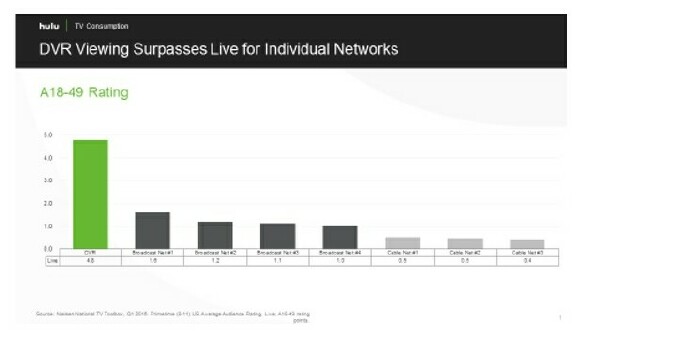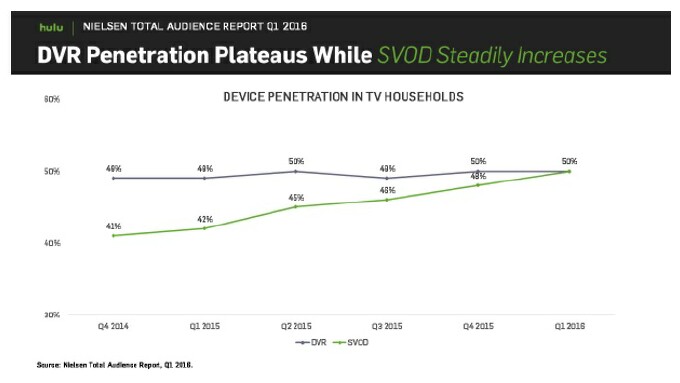Hulu: VOD is Win, Win, Win

Over the last twenty years, the digital revolution has ushered in a golden age of media consumption for viewers, readers and listeners. And in the same period, publishers and broadcasters have seen their business models upended.
News junkies have seen an explosion of news choices, but publishers -- while still creating indispensable content -- have witnessed their revenue shift to multiple search alternatives, from Google and Kelly Blue Book to Fandango and eBay. This is a win for news lovers, but a business challenge for newspaper publishers.
Similarly, music fans now have unprecedented access to their favorite bands and artists with the extraordinary amount of affordable, portable and on demand music experiences available today. The win for listeners is clear, but musicians are left to create news ways to make a living with their art.
This brings us to TV. The programming grid -- which used to dictate everything on television -- is waning in its importance to viewers who are taking control of their TV viewing behavior. The shift from institutionally controlled media to user controlled media is seemingly irreversible. This started as a trickle with the introduction of the VCR and skyrocketed with the introduction of the DVR, the explosion of bandwidth and now the arrival of the connected living room.
With the DVR, viewers can watch on their own time, which is a win for them, but a loss to the broadcaster and the marketer. In fact, Hulu research indicates that viewers who want to avoid ads use the DVR more than twice as much as everyone else. Time shifting ads on a hard drive is bad for business, but at the moment, DVR viewing taken collectively is larger than any individual network viewed live.

However, new technology has enabled a shift to viewing video on demand which is very promising for broadcasters and marketers. In the most recent Nielsen Q1 Total Audience Report, it was revealed that the SVOD universe is now equal to DVR penetration at 50% of homes using TV. And that’s up 19% year over year.

What’s more, a Nielsen study commissioned by Hulu shows that our millennial subscribers watch 28% less DVR than the average viewer -- that’s about 400 minutes per viewer. The more people get accustomed to viewing on demand, the less they rely on the hard drive sitting in their living room.
In other words, on demand viewing is a win, win, win scenario and here’s why: For the viewer, VOD is all about control they’ve grown accustomed to, allowing them to have their personalized content available to them at any time, on any screen. Win! For advertisers, VOD is all about dynamic ad insertion. Stop counting ads recorded or skipped on a hard drive and start showing the exact right ad at the exact right time. Buh-bye, C3 and C7. Win! Viewers are able to time-shift and place shift, so it doesn’t matter if they are watching last month’s The Mindy Project or last night’s Tonight Show because with dynamic ad insertion viewers get that moment’s most relevant ad.
And finally, television networks enjoy a win too as they’re able to recapture all of those time shifted ads. But here’s an important safety note: Networks must show restraint and keep the ad load light in commercially supported VOD or they will be doomed to repeat history and drive viewers to ad free alternatives. Enjoy the wins that come with the rise in VOD behavior!
As more viewing is taking place via connected TVs, it is imperative for advertisers to realize the reach that VOD can offer, the effectiveness of unskippable ads in an on demand environment, and the clear reasons that VOD represents the true “win, win, win” scenario.
The opinions and points of view expressed in this commentary are exclusively the views of the author and do not necessarily represent the views of MediaVillage.com/MyersBizNet management or associated bloggers.


